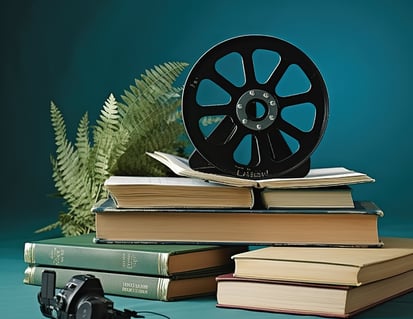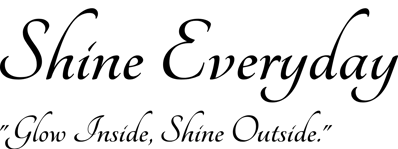Book vs. Movie: Comparing the Best Adaptation
Books and movies are two powerful storytelling mediums, each offering unique experiences. Books provide in-depth exploration of characters and detailed worlds, while movies bring stories to life with visual impact and performances. In this blog, we’ll explore the best book-to-movie adaptations, examining how filmmakers translate the essence of a written story into a captivating visual narrative. Discover how directors, screenwriters, and actors adapt these rich tales into compelling films, balancing cinematic artistry with the heart of the original text.
BOOKS
By Rini Singh
9/23/2024


Some key elements of comparison might include:
1. Fidelity to Source Material: How closely does the movie follow the original book? Were the main themes, character development, and plot twists effectively depicted?
2. Character Interpretation: Characters in books are frequently imagined by the reader, whereas in movies, their portrayal is shaped by casting and performance. How do these depictions compare to the versions in the book?
3. World-Building and Visuals: The written language allows for boundless imaginative interpretation, while movies offer a visual extravaganza. In what ways do movies recreate the setting of the book, and does it align with the reader's visualization?
4. Narrative Depth vs. Time Constraints: Films frequently need to compress or alter elements of the plot. How do they manage to incorporate omissions or additions while maintaining the essence of the storyline?
In this blog, we will assess the pros and cons of each medium and think about the key factors in a successful adaptation. Whether you prefer the original book or enjoy cinematic interpretations, this comparison focuses on pointing out the successes and failures in adaptations.
Books and movies are both powerful mediums for storytelling, providing distinct experiences. Though books offer rich detail, complex character growth, and room for interpretation, movies provide a concise visual storytelling that can make stories come alive on screen. This blog will investigate notable book-to-movie adaptations and evaluate which platform portrayed the story better.
Bollywood:
1. "2 States" by Chetan Bhagat
o Book: The book is partially based on Chetan Bhagat's personal experiences in a romantic relationship and explores the clash of cultures between Tamil Nadu and Punjab in India. The book provides deep understanding of the emotional experience of the main characters, Krish and Ananya, as they attempt to connect their two separate cultures. The detailed exploration of internal monologues and emotional tension allows readers to empathize with the characters' challenges.
o Movie: Despite its success at the box office, the film simplifies many intricate elements of the novel in favor of emphasizing the more whimsical and amorous themes. It misses some of the nuanced emotional tensions among the characters and their families, with some of the book's witty moments not coming across in translation.
2. "The White Tiger" by Aravind Adiga
o Book: The novel that won the Booker Prize is a pointed social critique on India's social stratification, dishonesty, and the emergence of individuals who succeed on their own. Balram Halwai, the main character, narrates his tale through letters, presenting a clever and profound commentary on societal and economic challenges. Balram's deep contemplations and ethical dilemmas are thoroughly examined, providing a complex perspective on the reality of contemporary India.
o Movie: The Netflix version is visually attractive and features good performances, but it falls short in portraying Balram's complete psychological change. Certain darker and introspective elements of the book have been softened to enhance its appeal to a worldwide audience.
3. "The Namesake" by Jhumpa Lahiri
o Book: Lahiri's book delves deeply into the immigrant journey, specifically centering on a Bengali household adapting to American life. The book provides a detailed examination of the main character Gogol's struggle with his identity, pulled between his American upbringing and his Indian background. Lahiri's storytelling is nuanced, rich in cultural observations, and effectively portrays the divide between parents and children in immigrant households.
o Movie: Although the film is visually stunning and closely follows the storyline, it is missing some of the emotional subtleties found in the book. The book delves more deeply into Gogol's internal conflicts, particularly his struggle with his name and identity, than the film does.
Hollywood:
1. "Harry Potter" series by J.K. Rowling
o Books: The Harry Potter books are famous for their detailed world-building, complex storylines, and well-developed characters. The books offer readers a chance to completely engage in the enchanting world, delving into the personal development of characters like Neville, Hermione, and Draco, in addition to Harry's journey. Rowling explores themes such as love, sacrifice, prejudice, and friendship in her writing.
o Movies: The Harry Potter movies are visually impressive and portray the magical world in a way that the books cannot replicate. Nevertheless, because of time limitations, they overlook multiple subplots and intricate details from the books, including crucial character backstories (such as the Marauders), Harry's personal dilemmas, and specific themes (such as the house-elf subplot). Although the movies are good on their own, the books provide a more in-depth experience.
2. "The Great Gatsby" by F. Scott Fitzgerald
o Book: Many people consider Fitzgerald's novel to be one of the top works in American literature. The complexity of the text lies in its poetic language, detailed symbolism, and profound exploration of the illusion of the American Dream. The book contains multiple metaphors and subtleties, especially in its criticism of wealth, love, and societal decline in the Jazz Age.
o Movie: Baz Luhrmann's 2013 movie adaptation is visually impressive and effectively portrays the luxurious and extravagant lifestyle of Gatsby's world. Nevertheless, it doesn't possess the nuanced and profound social critique found in the novel. The film prioritizes stunning visuals over the book's profound messages, leading to less intricate character development for the sake of drama.
3. "The Shining" by Stephen King
o Book: Stephen King's horror novel contains elements of both a psychological thriller and a ghost story. The book explores Jack Torrance's mental decline as the Overlook Hotel exploits his vulnerabilities. King skillfully creates tension and offers profound psychological understanding of Jack's thoughts, enhancing the horror's intimacy and fear factor.
o Movie: Many consider Stanley Kubrick's film The Shining to be a masterpiece in cinema, despite the fact that it deviates significantly from Stephen King's original vision. Kubrick decreases much of the supernatural horror and instead highlights a more ambiguous, psychological approach. Despite being visually impressive and quite terrifying, the film lacks the same level of character development as King's novel. The King has personally expressed his dissatisfaction with the movie, particularly in its portrayal of Jack Torrance's descent into madness.
Why the Books Are Better:
In every instance, the books provide more detailed storylines, more in-depth character growth, and more extensive exploration of themes. Films are typically limited by time and rely on visuals to tell the story, often resulting in a condensed or simplified version of the original. Although certain film adaptations do capture the essence of the book, they often fail to fully capture all of the layers present in the written work.
Books provide the opportunity for intricate development of worlds, deep exploration of characters, and complex subplots that are too extensive for a two-hour movie. If you enjoy getting absorbed in the details of a plot, reading the book typically offers a more satisfying experience than watching the movie version.
